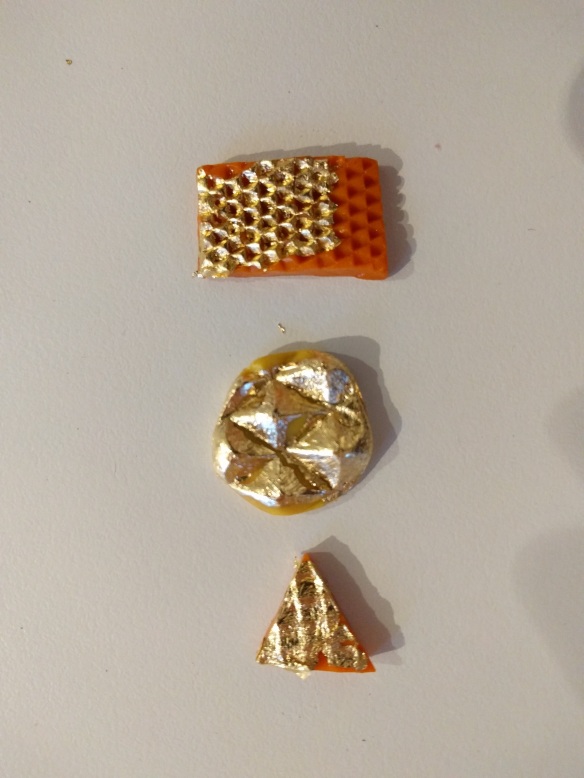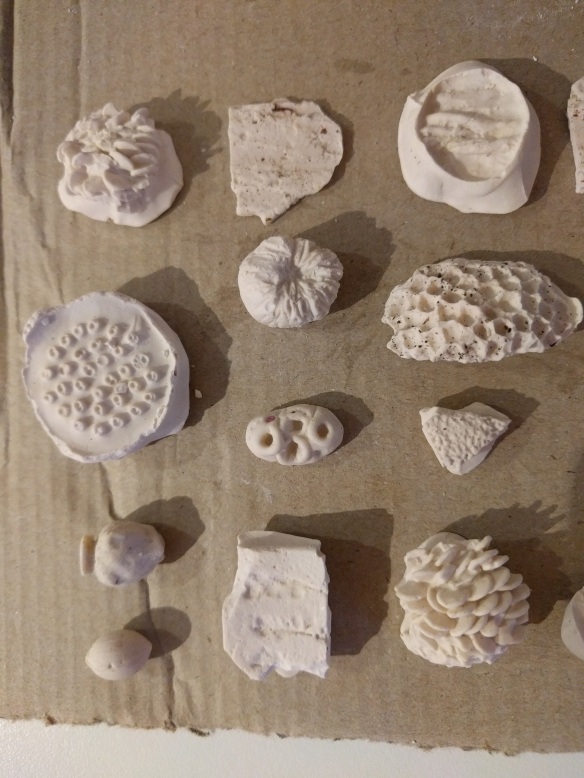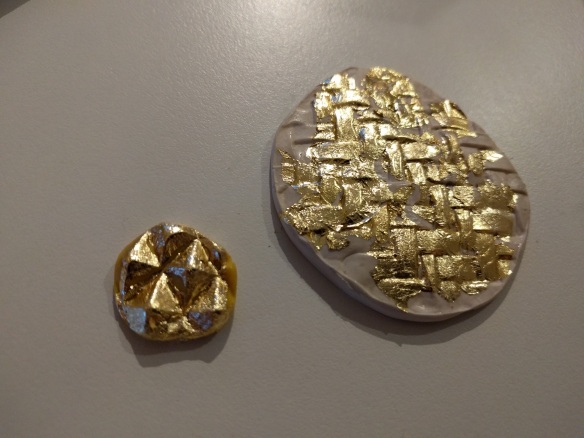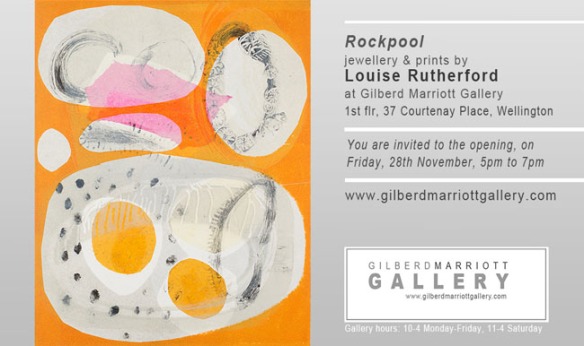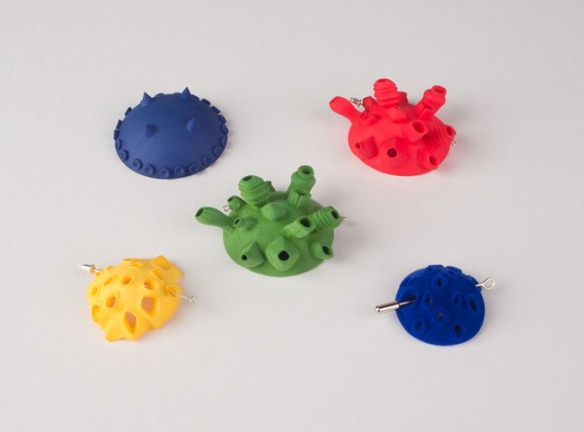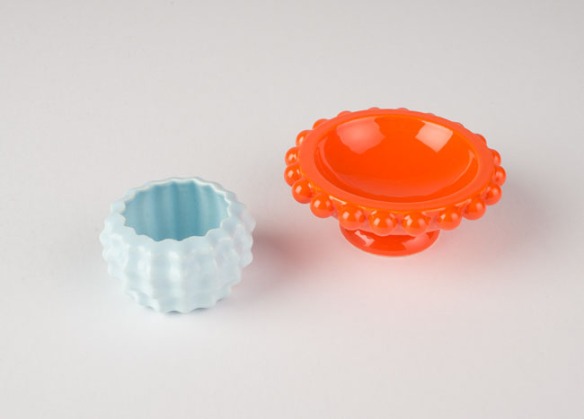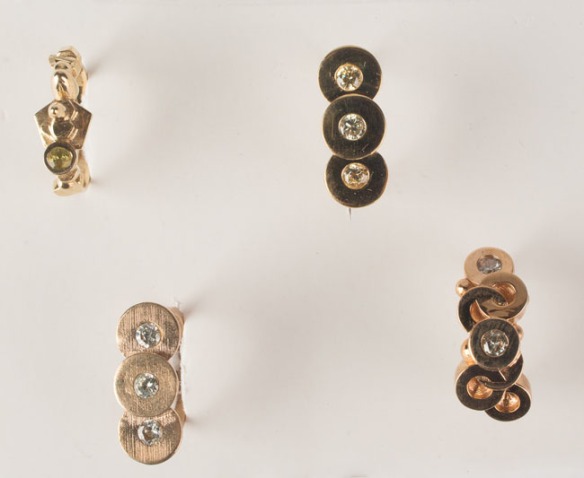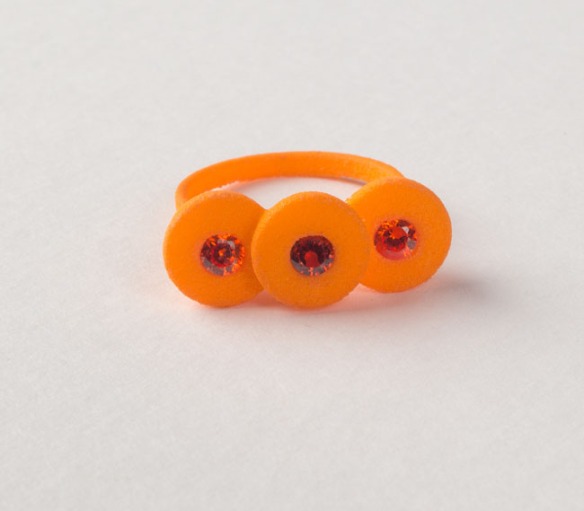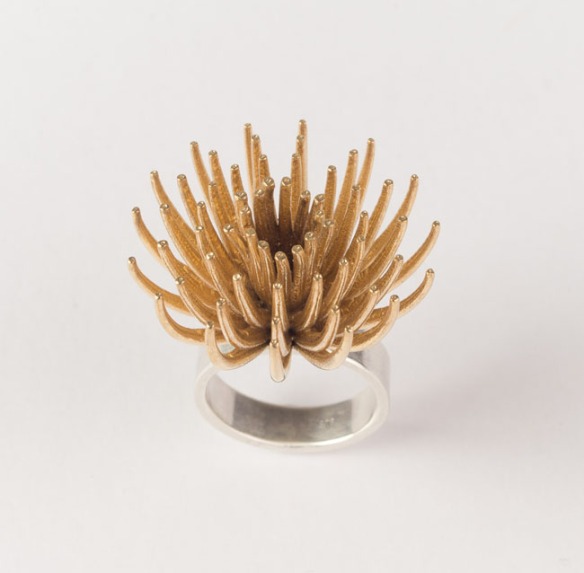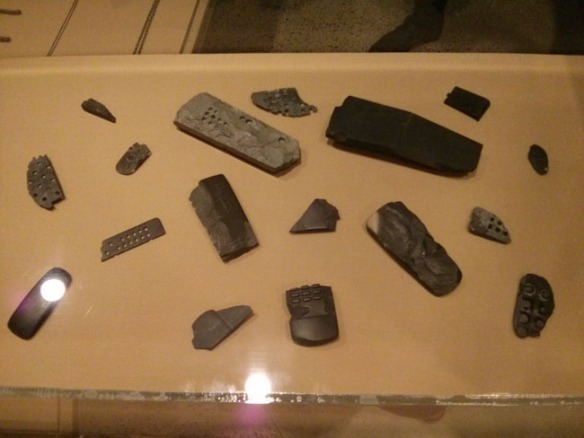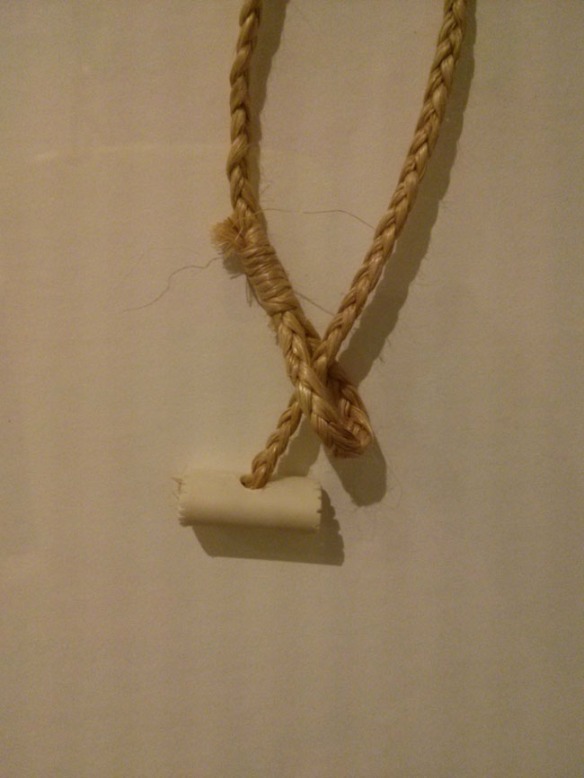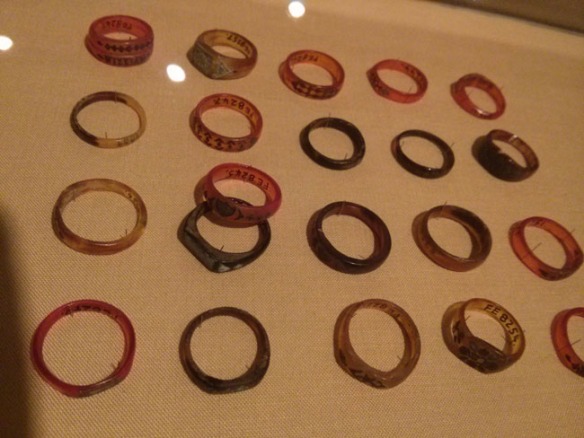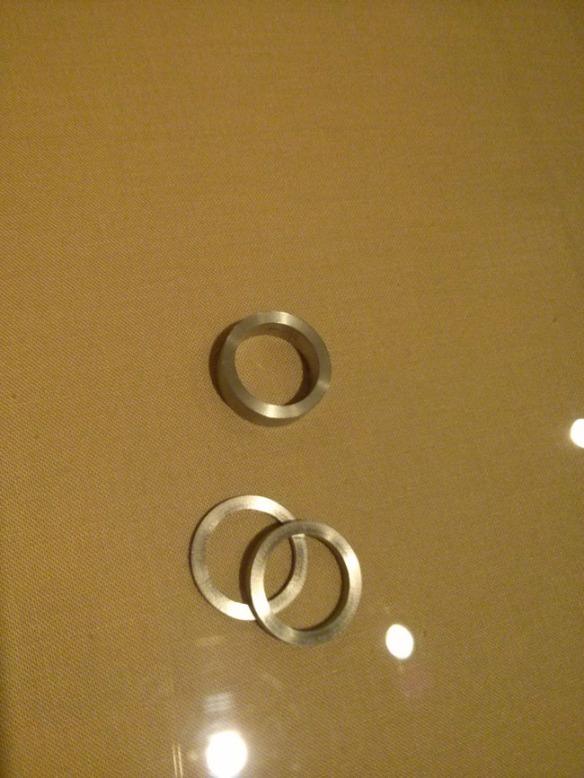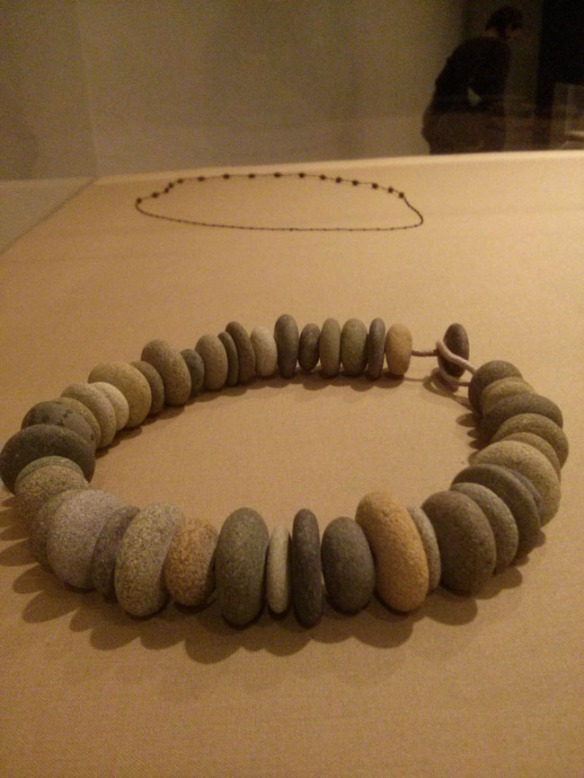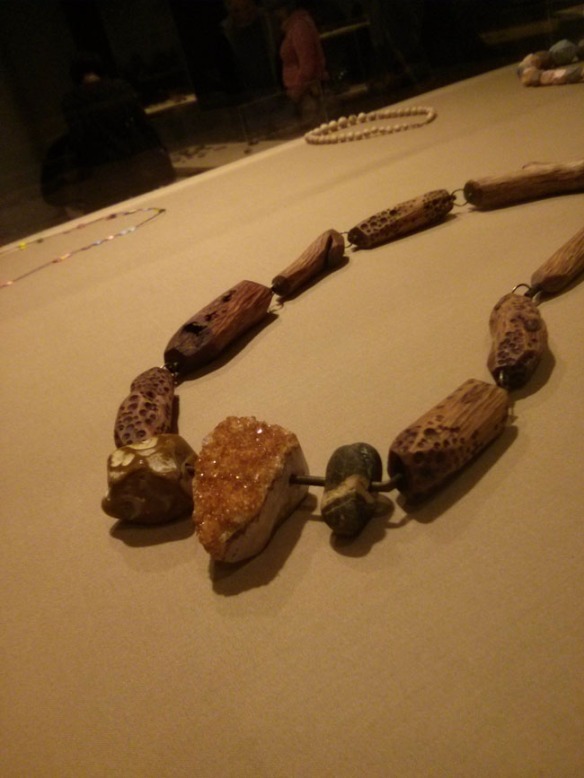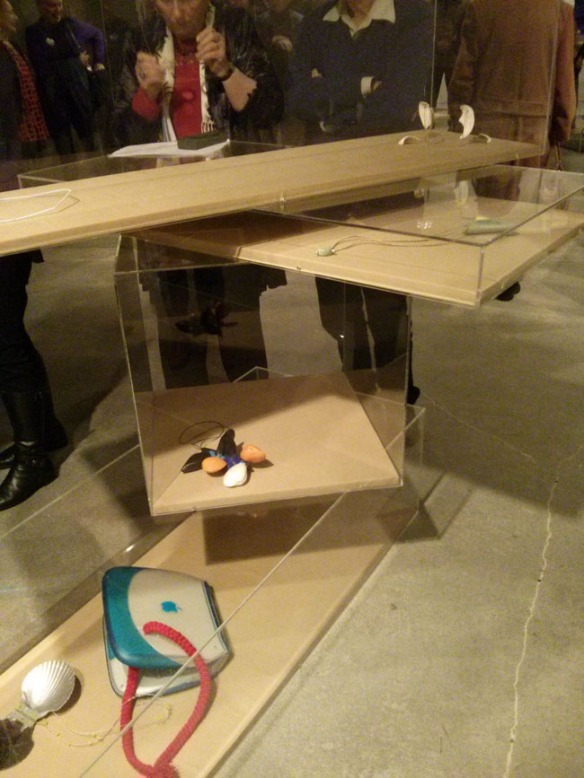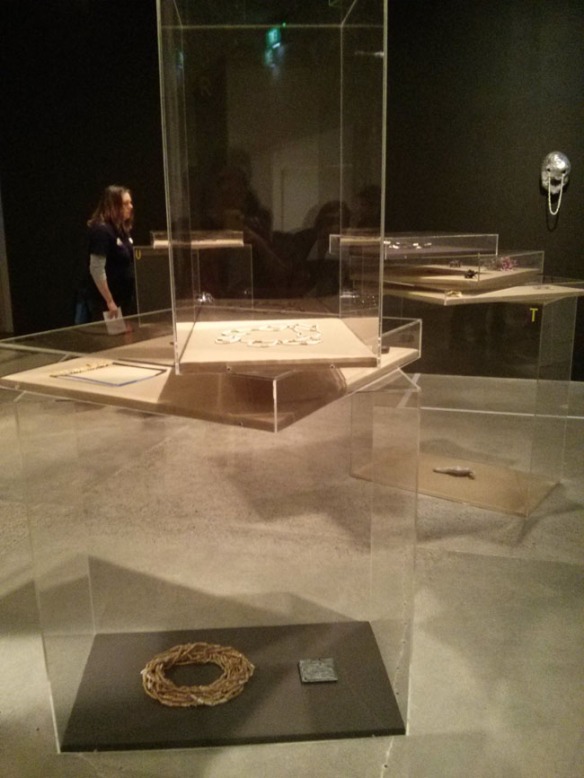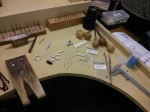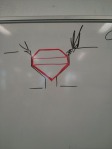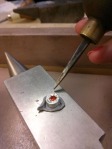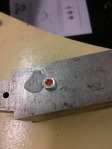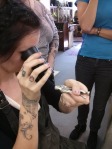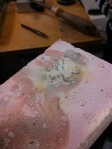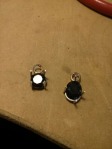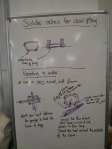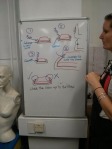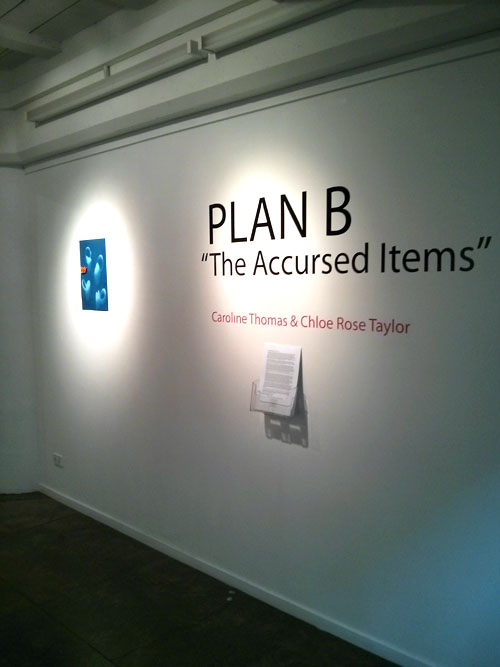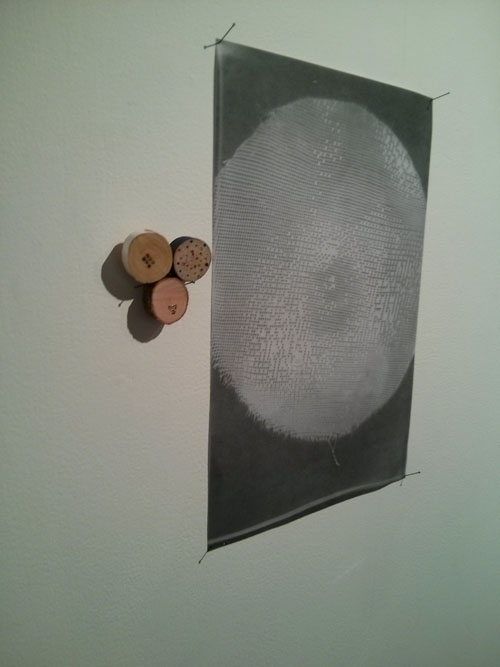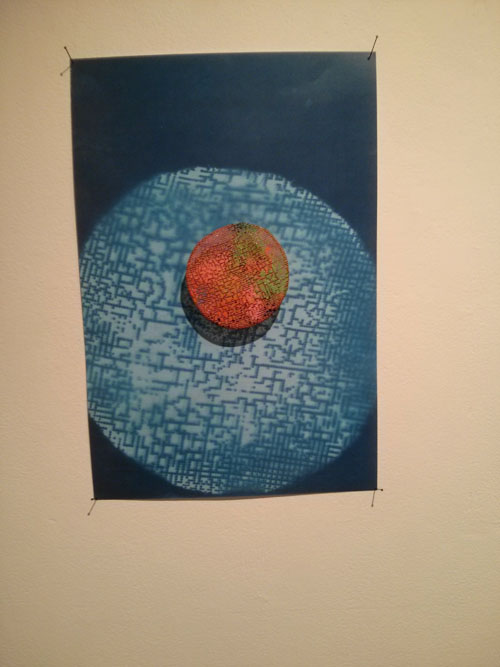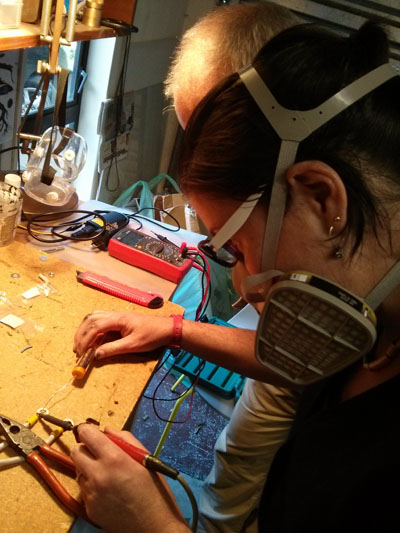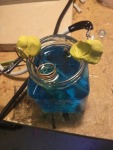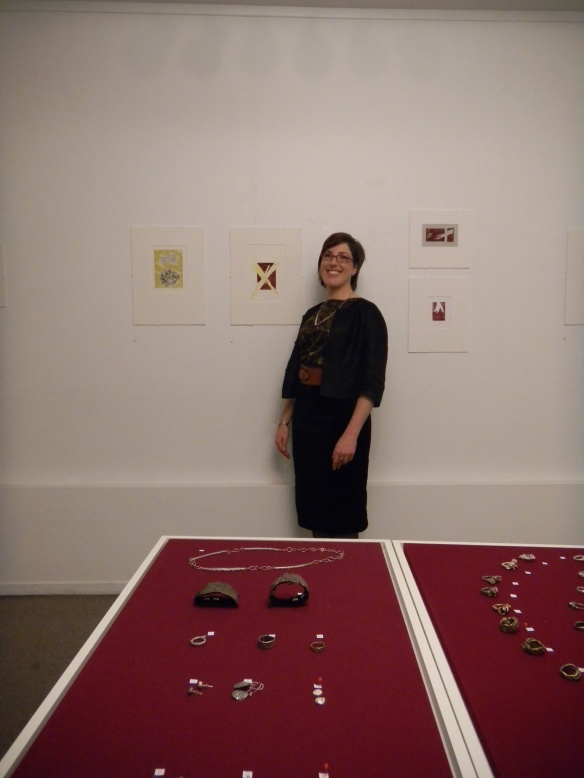I can hardly believe that the last time I worked on an art project was more than a year ago! Here’s an update, then, on what I’ve been doing since last year, apart from having a two year old and various other life events. These are fimo and resin, with gold leaf. They feel a bit like finds from Atlantis, eaten away by time.
Category Archives: Jewellery
Rockpool: exhibition at Gilberd Marriott Gallery in December 2014/ January 2015
Feeling so great about my exhibition! I can hardly believe I managed to make this happen with a three month old baby. I imagine the next one won’t be for several years! (although I’ve got heaps of ideas already).
The opening was nervewracking but fabulous; after I get over my nerves and into the swing of it, I love having the opportunity to talk about my artwork, how it’s made and what it means. One of the reasons I wanted to have the exhibition was to have the chance to share all I’ve been learning about 3D modelling and printing – it seemed so mysterious.
Here are some of my prints hanging:
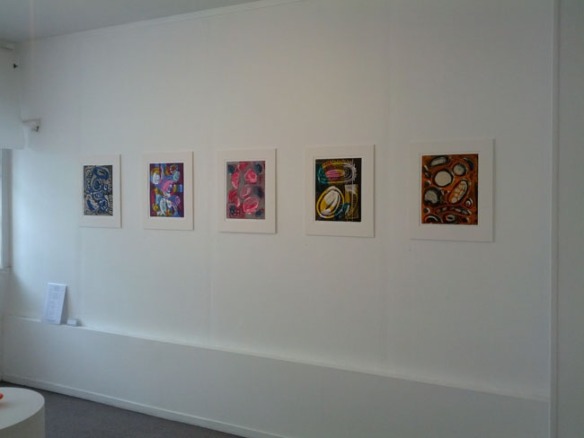 Me taking my baby to see the exhibition even though she’s too young to appreciate the finer points…
Me taking my baby to see the exhibition even though she’s too young to appreciate the finer points…
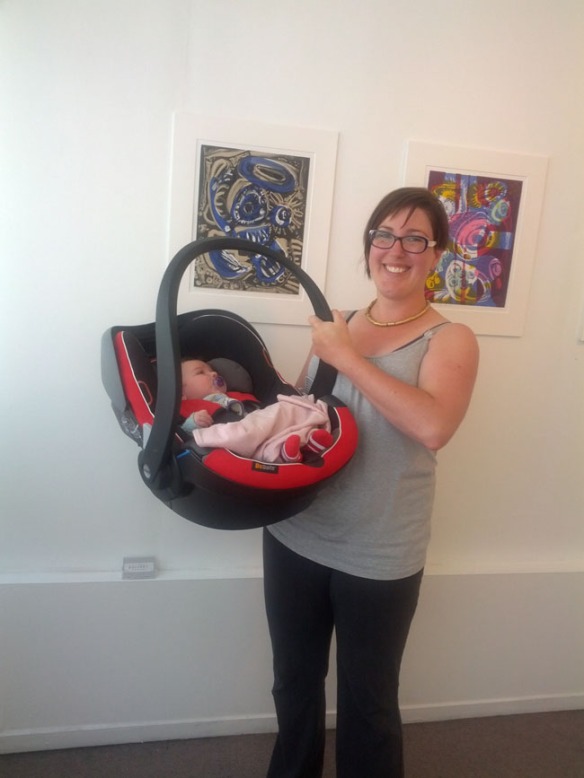
3D printed brooches
3D printed ceramic bowls
3D printed metal jewellery
Wunderrūma at the Dowse
I was so lucky to not only get to the Wunderruma exhibition at the Dowse, but also to the artist talk the first saturday it was open.
http://dowse.org.nz/exhibitions/detail/wunderruma-schmuck-aus-neuseeland
I have been looking carefully at methods of fastening lately:
Beautiful textures on this wood:
I was as interested in the presentation as I was in the jewellery – I loved the jewellery displayed on those long clean planes that seemed to hover in space.
Jewellery techniques: setting faceted stones
Another fantastic course at Workspace Studios on how to set faceted stones, tutored by the fabulous Annie Collins and Vaune Mason This is going to be the perfect technique for me – if only I had known when I made this ring below. I love it, but it could have been better with a few beautifully controlled settings. Next time!
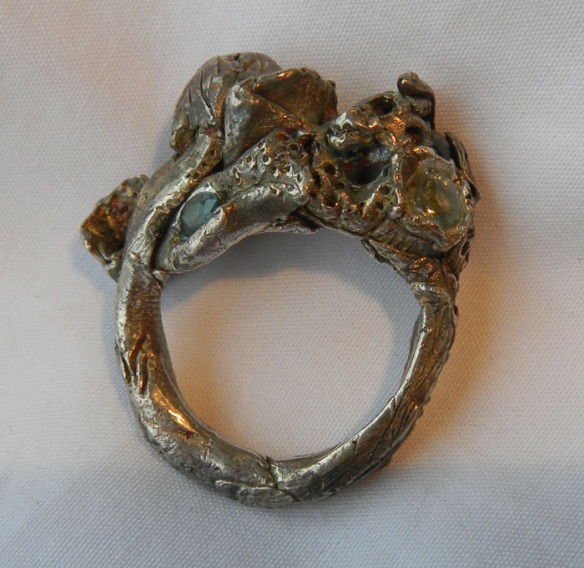 Anyhow, here’s a few pics on the process. I’ll just say that these photos are more for my own memory than to be a good explanation of the technique. If you want to learn how to do this yourself, my advice is to take the Workspace Studios class – Vaune is a great teacher! If only I could explain it as well as she did during the class.
Anyhow, here’s a few pics on the process. I’ll just say that these photos are more for my own memory than to be a good explanation of the technique. If you want to learn how to do this yourself, my advice is to take the Workspace Studios class – Vaune is a great teacher! If only I could explain it as well as she did during the class.
- Materials
- Stones, practice settings
- Remember to use a piece of metal thick enough so the point of the stone doesn’t come through.
- Measure the stone. This is a 3.5mm stone.
- To set a 3.5mm stone, you first need to drill a hole about 3/4 the size of the stone’s diameter (2.6mm). We actually used a 2mm drill.
- Centre punch /scribe a point in the centre of the metal, then drill the 2mm hole.
- Then drill a seat for the stone with a burr the same size as the stone.
- Drilling with a 3.5mm burr.
- You need to drill STRAIGHT down, so you keep a straight ‘cliff’ around the edge.
- Hold the metal with a mini vice grip
- Collapse the ‘cliff’
- Start with a larger punch, and work your way down to the smaller punches
- Start with the four corners
- Vaune Mason’s great notes!
- A punch
- Check if the stone is set properly
- Finished objects
Jewellery techniques: creating claw settings for stones
I recently attended a great course at Workspace Studios on how to create claw settings, tutored by the directors Annie Collins and Vaune Mason, both talented practicing jewellers. I’m really happy to finally know how to do this properly!
For the record, here’s some photos of the day:
- After measuring the stone, preparing an appropriate sized ring and cutting wire for prongs, set up the claw setting in a block ready for solder.
- Getting ready to solder.
- The setting, ready to solder – flux applied.
- After soldering.
- Ready to curve the prongs.
- For setting, put the stone into the setting and set the whole thing in ‘jet set’.
- In Jet set.
- Vaune Mason’s soldering notes for creating a great claw setting.
- blutakked to a tiny anvil for ease of burnishing the claws down.
- Vaune Mason’s notes on how to burnish the claws down on a claw setting.
- Vaune’s notes again.
Plan B
Electroforming 3
Decided to give the practical aspect of this project a rest for a while.
I have been doing some reading from the excellent “Jewellery Concepts and Technology” by Oppi Untracht (Robert Hale, London, 1982), particularly Chapter 16 “Metallic Buildup – Electrolytic Molecular Creation of Surface and Form”.
It’s got about 40 pages of detailed info about all aspects of electroforming and electroplating, including this recipe:
Typical Acid Copper Plating Bath
- Copper Sulphate (26-33 ounces per gallon)
- Sulphuric Acid (4-10 ounces per gallon)
- Current Density (20-40 amps/square foot)
- Voltage (6)
- Temperature (21-48 centigrade)
- Anode (copper)
Experiment to be continued in November!
Electroforming 2
Regretting my lack of attention in science classes at secondary school, I am luckily able to enlist the help of my resourceful father to help me convert my old computer power supply, and set up the electroforming solution.
How great it is to have a wonderful dad who possesses not only his own soldering iron, electricity meter and electric drill, but also the electrical know-how to help me on projects where I have no idea where to start! Thanks dad! Here we are, hard at work:
The day was enlivened by some stressful moments where I thought I had wrecked the entire set-up by shorting the power (Lesson: do NOT allow the coloured wires to touch each other, or the metal power case!!).
We basically followed these instructions http://www.instructables.com/id/Convert-an-ATX-Power-Supply-Into-a-Regular-DC-Powe/ to convert the power supply, although we used bolts instead of plugs to connect our red, yellow and black wires.
After a good 8 hours or so of work, I discovered that I am still only at the beginning of the electroplating journey. I ran into some strange issues with the power supply voltage, and with the electroplating of the object itself. I’ll go into that in more detail below. For now, here’s a gallery of the day’s events:
- Safety first – especially when pregnant. I’m wearing eye protection and a respirator that protects against gases and particles.
- The raw power supply, ripe for conversion!
- Cutting the wires
- Stripping the wire
- Preparing to solder the green wire to the black (ground) wire. This tells the power supply to be permanently on without a computer.
- Testing the voltage… yes, the black wire seems to be the ‘ground’.
- Soldering wires of the same colour together onto a lug
- The finished power supply; the different voltage wires connected to three different bolts, with white wires (we made these and soldered aligator clips to them) to connect the power supply to the electroplating fluid jar. But when we test the voltage, it isn’t what we expect. The yellow wire says its -12 volts. When we swap the poles, it says its +2.85!! We aren’t sure what’s going on, but forge ahead anyway!
- The plating setup ready to be connected, complete with cathode and anode.
- Connected up, copper acetate added, power supply turned on. Nothing dramatic happening at 5 mins in. A few bubbles to indicate a reaction. Do we have enough surface area on the anode (copper bit)?
- Plastic separator in the solution to keep the anode and cathode from touching.
- The solution after 24 hours. The wire connecting the cathode (graphite powder covered stick) to the power supply has corroded away completely, twice, but little if any copper has adhered to the graphite.
- After 24 hours in the solution, nothing much has happened! (except the connection wire has gone VERY green and corroded.
- Preparing an alternative cathode with conductive glue instead of graphite powder (looks just like graphite powder in a glue solution, though!)
- Putting the new cathode in the solution
- Power supply turned on, trying a new cathode.
- Electroplating in … progress?
So, a few issues. Here’s the message I posted to the ‘power supply conversion’ person on the Instructables website:
A question for you… my dad and I converted a power supply according to your instructions, but with the wires connected to bolts instead of to plugs (I inserted a photo). We tested the voltage with our meter. Our results for the yellow wire were:
black pole on black wire & red poll on yellow wire (would have thought it should be positive) = negative 12 volts!
black pole on yellow wire & red pole on black wire (you would have thought this would give positive 12 volts) = positive 2.85 volts!
Neither of us understood why we got this result. Any suggestions much appreciated.
Also, now I’m using the power supply to electroform a piece of stick (coated in varnish, dried, sprayed with waterproof glue, covered with graphite powder as a conductive medium). It’s been in there for more than 24 hours, but I don’t see any plating happening (lots of bubbles though!).
If you have any thoughts as to what we could be doing wrong in either part of the procedure, they would be great to know! Thanks for your help 🙂
PS and the copper wire connecting the graphite-coated stick to the red alligator clip keeps breaking off. There is something not right here!
So as at Sunday afternoon, my new trial cathode is in the solution, and I’m waiting for a response from the forum.
The conductive glue is waterbased, and seems to be peeling right off the cathode, so not feeling 100% positive about it! I’ll wait and see what it does tomorrow.
I’m also looking on troubleshooting websites. This method looks VERY simple http://www.banjohangout.org/archive/173409 but he’s just plating metal, not an organic object. This was one interesting comment on the site: “It is the AMPS which assist the plating process, not the volts. The battery charger is just fine as a rugged, dependable, economical power supply“. We didn’t actually measure the AMPS. Something to think about. Then maybe I’ll buy a battery charger!
Some more useful electroplating links
A troubleshooting guide: http://www.platingbooks.com/HCrSection5secured.pdf
http://www.hometrainingtools.com/a/electroplating-science-project
http://www.santarosa.edu/~yataiiya/E45/PROJECTS/Electroplating%20Organic%20Materials.pdf
http://www.instructables.com/id/Electroforming-an-Iris-Seed-Pod/
Electroforming
There’s a cave. There’s a fireplace at the back of the cave where thick logs are burning. Against the left wall stands a boulder. On the boulder are my platonic forms, the as yet unarticulated perfect objects inside my head. The light is so flickering and dim, I can’t see them clearly. Occasionally I see a few details in the light of a flare from the fire.
They’re the dream-forms I’m always trying to draw, or photograph, or make. I feel like I can tell, when I look at each thing I’ve made, how far away it is from the essence of what I want. Over the years, learning new skills, finding out about new things, I slowly get closer to my dream-form.
I recently found out about a beautiful new technique that will help me get there. Electroforming. Here are some of the electroformed pieces I found that I particularly love:
 (http://carlotta-wwwsplendor.blogspot.co.nz/2011/02/ornella-iannuzzi.html)
(http://carlotta-wwwsplendor.blogspot.co.nz/2011/02/ornella-iannuzzi.html)
 (http://www.klimt02.net/jewellers/jillian-moore)
(http://www.klimt02.net/jewellers/jillian-moore)

 (https://www.snagmetalsmith.org/members/GerardE/)
(https://www.snagmetalsmith.org/members/GerardE/)
“Electroforming (also electroplating) is the process of coating organic and other objects with a thin layer of real metal (silver, copper, gold, etc.). Electroforming allows you to use complex natural shapes in jewelry-making projects without difficult (or impossible) fabrication. Electroforming requires the use of a rectifier, electroforming liquid, graphite paint, and other supplies.” http://www.jewelrymakingdaily.com/topics/electroforming.aspx
My problem right now is that the equipment for electroforming involves electricity and chemicals, both things that I am unfamiliar with. Of course, I could buy the $500 electroforming kit. But I don’t want to spend that much money before I can figure out if I really like it. So, this post is going to be about how to set up the cheapest possible effective electroforming system. It’s going to start from the very beginning, and be comprehensible for me, who is totally non-technical.
[Be careful if you decide to follow any of these instructions – as you know already, obviously, electricity and chemicals can be dangerous!]
The basic principle of what you’re doing when you’re electroforming is making a circuit.
 http://en.wikipedia.org/wiki/Electroforming
http://en.wikipedia.org/wiki/Electroforming
“Electroformed metal is extremely pure, with superior properties over wrought metal due to its refined crystal structure. Multiple layers of electroformed metal can be molecularly bonded together, or to different substrate materials to produce complex structures with “grown-on” flanges and bosses.
The diagram above shows the electroforming process at work. The positively charged electroformed metal source (anode) at the left is broken down (ionized) in the copper electrolyte solution and is attracted to the negative charged mandrel (cathode). Build-up is achieved over all mandrel surfaces at an approximate deposition rate of .001″ per hour.” http://www.webcitation.org/5nFPhQ1UK
This is a good electroforming tutorial by Sheri Haab, but she uses a pre-made off the shelf AC/DC converter that you have to buy.
One of the things I need is a copper electroforming solution. This solution makes the electric current from a rectifier move in the beaker. Again, this is expensive from Regal Casting, and from Rio Grande in the USA. But I found an alternative at http://www.instructables.com/id/High-Quality-Copper-Plating/?ALLSTEPS ” Rather than buying copper acetate pre-made, we will make it ourselves” I like this attitude! Here are his instructions for making copper acetate:
“copper acetate. This chemical solution has positive copper ions that will be attracted to our negative cathodes when we do our electroplating. Please note that copper acetate IS poisonous. Please dedicate a container to it that will never be used for food and thoroughly wash your hands after coming into contact with it.
The first thing you need to do is add equal parts of distilled vinegar and hydrogen peroxide into your mason jar (ie “half and half”). Your ratio does not need to be exact. The hydrogen peroxide will cause the copper to oxidize quickly. This, in turn, allows the copper to react with the acetic acid in the vinegar quickly.
Heat the mixture in the microwave until it steams gently (about 1 minute, 45 seconds for me). This can also be done on the stove over low heat in a glass (not metal) container. The reason we are heating up the mixture is so that our copper reacts more quickly in the next step.
Wash your hands well to remove any oils form your skin.
Stretch out the copper scouring pad and break it into two pieces. Note that the copper wire may be sharp, so you may want to use gloves to do this.
Place the copper into the warm vinegar/peroxide mixture. Screw on the lid and gently swirl.
As time passes, the liquid in the jar will become more and more blue. The blue color comes from the copper ion in the copper acetate that is being created. The longer you leave the copper in the mixture, the more saturate and the more blue the solution will become.
Note that the goal is NOT to create a very saturated copper acetate solution. In fact, it is far better to have a weaker solution than a stronger one. When we start electroplating, we want the copper atoms to create very even layers on our object. If the copper builds up too fast, it will not adhere well and you will get “burn” spots.”
Another thing you need for electroforming is a rectifier – an electrical device that converts alternating current from your house (AC) to a direct current (DC) which flows in only one direction. I started searching for these and was dispirited when I found out that jewellery rectifiers cost about $1200 if you get them through Regal Castings. I tried Trademe, which has car engine type converters for $400. Still expensive, and I wasn’t sure they would do the job. Someone suggested a computer power supply, so that is the path I’m going down.
Here’s instructions on how to convert a computer power supply into something (I think) I can use for electroforming:http://www.instructables.com/id/Convert-an-ATX-Power-Supply-Into-a-Regular-DC-Powe/?ALLSTEPS
Glossary
The anode (the metal object that the metal is transferred from)
The cathode (your jewellery bit – the thing you want the metal to be transferred TO)
A conductive medium – so the metal will adhere to your organic object. Again, lots of expensive options. I’m going to go with graphite powder mixed with water and applied.
A stop-out varnish – to mask out the bits you don’t want a metal buildup on.
My electroforming shopping list
| Electroforming shopping list | Product name | Cost | Source |
| Power supply from an old computer | Thanks Sam! | 0 | |
| Alligator Leads (electrical) | $3.00 x 2 | Jaycar Electronics 264 Taranaki St | |
| waterproof glue | $19.99 | ||
| graphite powder | Trojan 18g Graphite Powder / Hodern 50g | $5.69 | Bunnings |
| Hydrogen Peroxide (3% or higher, pharmacy) | $5.99 per 100mls | ||
| Distilled White Vinegar (5% acidity or higher, grocery) | $3.00 | ||
| mason jar/glass jar | |||
| 100% Copper scoring pad (cleaning supplies) / copper wire | used alternative copper supply | Supermarket | |
| Conductive glue | $12.99 | Jaycar | |
| gloves | Supermarket | ||
| To convert the power supply | |||
| Insulating gloves | Leather gloves – already had | ||
| Drill | already have | ||
| Needle-nose pliers | already have | ||
| Soldering iron | electric soldering iron | $50 (only iron)- $150 for a kit | Jaycar Electronics 264 Taranaki St |
| Pro Soldering Gas Kit with Wire Strippers/Cutters/Heatshrink | Pro Soldering Gas Kit with Wire Strippers/Cutters/Heatshrink | $139 | Jaycar Electronics 264 Taranaki St |
| 3 x “Banana Jack” Insulated Binding Post sets | DIDN”T END UP NEEDING | Jaycar Electronics 264 Taranaki St | |
| 1 x bag of “#6” Ring Tongue Terminals (16-14 gauge) | “eye terminals” – 4 different sizes. Which size? | $3.50 | Jaycar Electronics 264 Taranaki St |
| Rubber feet | Rubber Feet – Small Stick On – Pk.4 (DIDN”T END UP NEEDING) | $3 | Jaycar Electronics 264 Taranaki St |
| Small bit of heat shrink. | 12 pack heat shrink tubes (shrink with a hairdryer) | $11.67 | Bunnings |
| Screwdriver | already have | ||
| Wire strippers | |||
Molten: Gilberd Marriott Gallery 29th June – 14th July 2012
The opening night of my first solo exhibition at Gilberd Marriott Gallery was an awesome day for me – the culmination of five years of learning, practicing and making. The space was packed with people, and felt really good about everyone coming along to look at my work – thanks so much everyone who came to see it!
Here is my artist statement from the show: ExhibitionStatement_GilberdMarriotGallery_June2012


